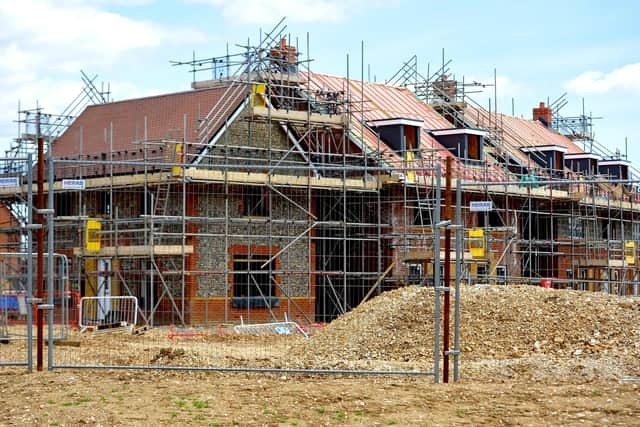Here’s how close Eastbourne is to its three-year housebuilding target
and live on Freeview channel 276
Published last week, the government’s latest housing delivery test figures show four out of the five local planning authorities in the county failed to deliver the housing required in the three years up to March 2021.
Only Lewes District Council achieved its three-year target, building 825 new homes against a 709-home requirement.
Advertisement
Hide AdAdvertisement
Hide AdAll of the other authorities — Eastbourne Borough Council, Hastings Borough Council, Rother District Council and Wealden District Council — fell short of their targets and will continue to face sanctions as a result.


Eastbourne, Hastings and Rother all fell below 75 per cent of their target and, as a result, will need to continue to apply a ‘presumption in favour of sustainable development’ when making planning decisions.
Wealden, which achieved 83 per cent of its target, faces a lesser sanction, being required to apply a ‘buffer’ on top of their five-year housing land supply.
The result is much the same, however, as the council cannot currently demonstrate a five-year housing land supply, so must also apply a presumption in favour in its planning decisions.
Advertisement
Hide AdAdvertisement
Hide AdAll the councils achieved similar results last year, meaning no new sanctions have been put in place as a result of the test.
While the results of the test are not disputed, many of the councils say the figures show the government’s housing targets are flawed.
Even Lewes District Council, which achieved and exceeded its requirement again this year, criticised the government’s targets for being ‘unrealistic’.
Similar criticisms have been levelled by Eastbourne Borough Council, which came lowest on the list locally with just 29 per cent of its target delivered.
Advertisement
Hide AdAdvertisement
Hide AdIts three-year target was to build 1,752 new houses, of which it built 560.
An Eastbourne Borough Council spokesman said: “We have made no secret of the totally unrealistic housing numbers that are calculated for Eastbourne using the government’s formula.
“Our Core Strategy Local Plan identified 240 homes a year as achievable, yet the number calculated for 2021/22 is 675. It cannot be a surprise to anyone that this figure has not been met.
“The constraints on larger residential developments in Eastbourne have not changed and won’t ever change. We will always be limited by our geography, the South Downs to the west, the English Channel to the south and a tightly drawn administrative boundary with Wealden District to the north and east.
Advertisement
Hide AdAdvertisement
Hide Ad“Current developments are limited to small brownfield sites with marginal viability and because of this developer interest in Eastbourne is low.
“What must change is the government’s housing requirement assessment for Eastbourne, it is plainly wrong.”
Wealden (which built 2,618 new houses against a target of 3,179) also challenged the fairness of the test, pointing out that it had approved many more houses than had actually been built by developers.
A spokesman for the council said: “Despite the government ‘relaxing’ the target to allow for the pandemic, our requirement across the three year period went up from 2,862 to 3,179 – an 11 per cent rise.
Advertisement
Hide AdAdvertisement
Hide Ad“However for the 2021 HDT three year period, the construction industry chose to only build 2,618 homes, despite us having a bank of planning consents of more than 7,500 homes.
“This leaves us with a Housing Delivery Test result of 82 per cent, requiring us to apply a ‘buffer’ – an extra 15 per cent to our housing requirement over the next five years.
“The council continues to lobby government to reduce our government imposed housing requirement to suitable levels, taking account of up-to-date housing need in the area.
“We remain deeply concerned about the use of 2014 demographic projections, not the more recent and much lower 2018 projections and with the so-called ‘affordability uplift’.
“We also want government to ensure that all the homes that we have granted consent for count towards our forward targets, regardless of when they are delivered.”